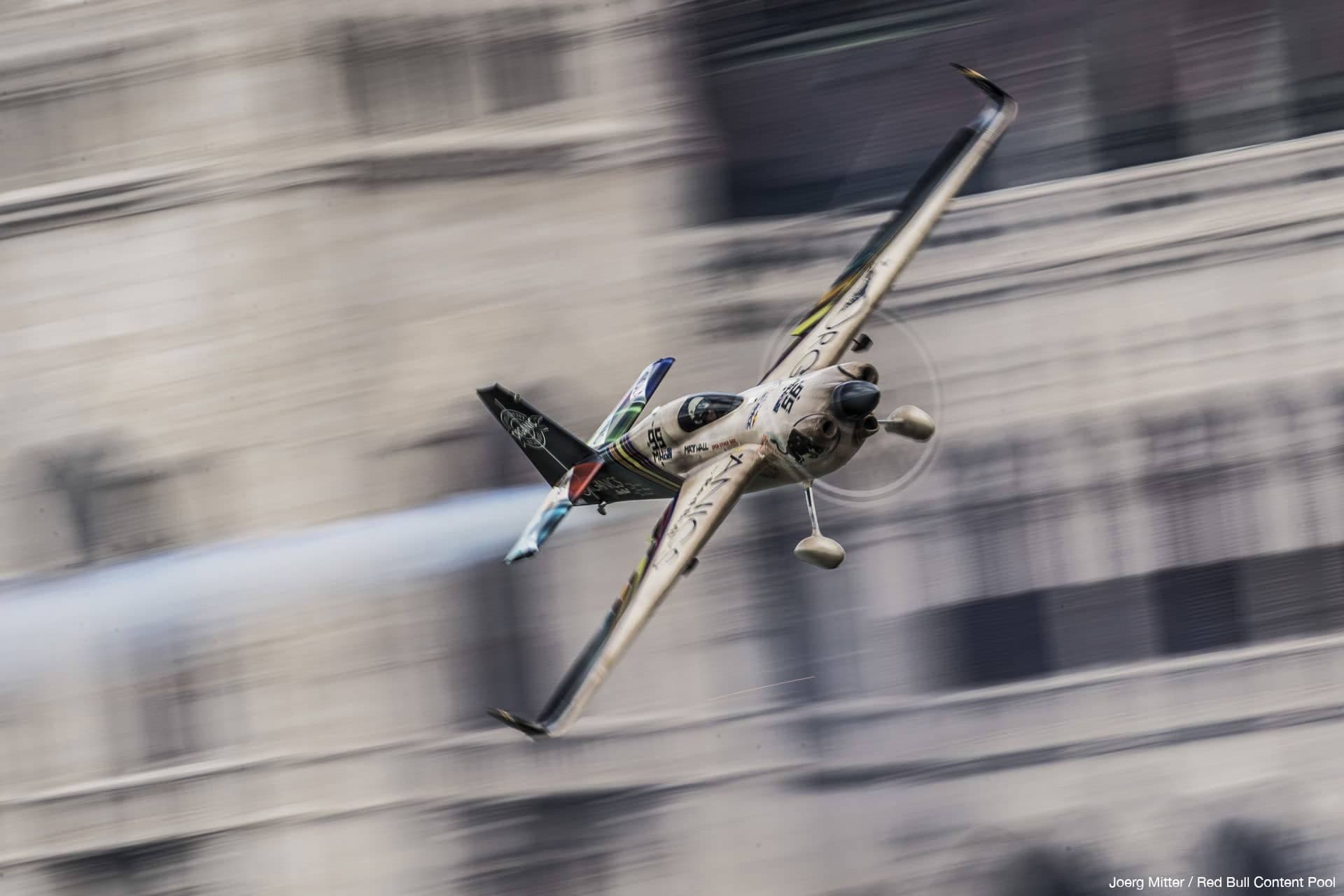How Matt Hall flies to Victory!
Over the weekend, most people tend to relax: enjoy a barbeque, watch a movie, sleep in. Some people, however, get into their aerobatic airplane and compete in the Red Bull Air Race: using the fastest, most agile, lightweight race planes, pilots hit speeds of 370kph while enduring forces of up to 12G as they navigate a low-level slalom track marked by 25-metre-high, air-filled pylons. Yes, 12G: twelve times your own body weight, double the amount Formula 1 race drivers experience!
Matt Hall Racing
Matt Hall is one of those adrenaline junkies and at the time of writing, the leader in the championship. It’s early morning, a week before the Cannes race, when we meet him in a hangar in Germany. He’s there together with team tactician Peter Wezenbeek, a former Formula 1 engineer who supported Fernando Alonso during his championship seasons at Renault. We inspect every part & shape of the plane, as Peter and I discuss options on how to improve race performance.
Race plane aerodynamics
Race plane aerodynamics At the beginning of the 2017 season the team switched from the MXS-R to the Edge 540 plane. For Matt, it meant unlearning the old plane’s character and getting close with the new one. For the team, it meant tweaking and optimizing the standard plane to become competitive. For example, they introduced special wingtips on the plane.

Ultimately, the goal is to be the fastest over the entire race course, so you’ll have to balance your setup and geometry between straight line speed and cornering speed, just like in road races.
Track knowledge & compromise
It’s relatively easy to improve the wings to pull high-G turns, but you’ll have lost speed by the end of the corner (something called “bleed rate”). Making the air intake for the engine bigger will increase power output but will increase aerodynamic drag as well, reducing top speed. And because the plane twists and turns in all possible directions during flight, optimizing a component for one wind direction or angle of attack might make it worse for another. Track knowledge & compromise are key!
Flight testing and aerodynamic simulations

But without proper insight, you’re moving in the dark. So, Matt sets off for another week of testing setups & gathering data and we set off to simulate the airflow around key components and areas of the plane. With that input, Peter and I discuss design changes to improve performance: bit by bit, just like an athlete, the plane gets into shape.

Time to fly!
Next up is the race in Kazan, Russia, on August 25-26. So that weekend, after the barbeque, just relax in front of the TV and cheer for Matt. Or do the opposite, unleash the hero inside of you and book an extreme 20-minute high energy flight with Matt Hall himself (we’re not kidding – click here )! Either way, you’re up for a thrill.

